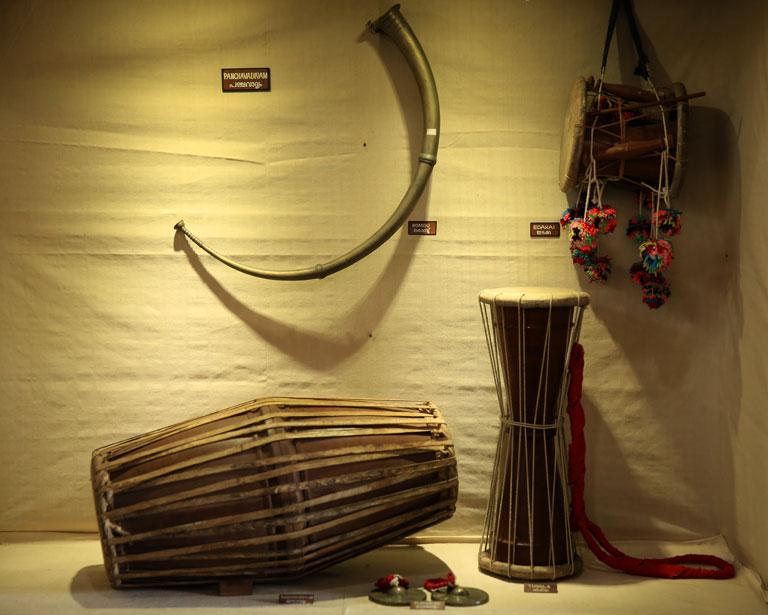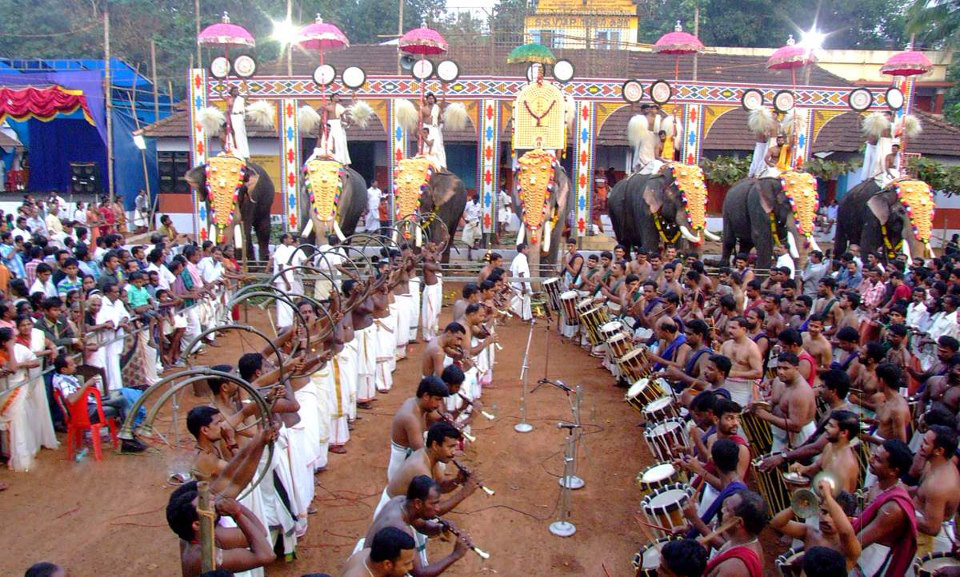Music has been an integral part of human culture since time immemorial, transcending boundaries and bringing people together. In the rich tapestry of Indian classical music, there are countless regional traditions and forms that captivate and inspire. One such tradition that stands out for its grandeur, complexity, and deep-rooted cultural significance is Panchavadyam. Originating in the southern Indian state of Kerala, Panchavadyam is a mesmerizing symphony that combines rhythm, melody, and spirituality in a unique and vibrant tapestry of sound.
Historical Roots
Panchavadyam, which translates to “five instruments,” is an ancient percussion ensemble that has been an essential part of Kerala’s religious and cultural fabric for centuries. Its origins can be traced back to the temples of Kerala, where it was performed as an offering to the deities during religious ceremonies and festivals. Over time, it has evolved into a revered art form that transcends its religious roots to become a symbol of Kerala’s rich cultural heritage.

Instruments of Panchavadyam
As the name suggests, Panchavadyam typically features five main instruments:
- Timila: A barrel-shaped drum, the timila, produces a deep and resonant sound. It serves as the primary rhythm instrument in the ensemble.
- Maddalam: The maddalam, another barrel-shaped drum, complements the timila’s rhythms with its distinct tonal quality. It provides a rich melodic element to the ensemble.
- Ilanjithara: This is a metallic gong that adds a shimmering metallic sound to the performance.
- Kombu: The kombu is a long, straight trumpet-like instrument made of brass. It provides the melody and is often used to signal the various sections of the performance.
- Edakka: The edakka is a small drum with a rich and resonant sound. It adds complexity to the rhythm and enhances the overall musical experience.
Performance and Structure
Panchavadyam performances are a breathtaking spectacle of sight and sound. Musicians, traditionally men, dressed in resplendent attire, with elaborate headgear and vibrant costumes, take center stage. The ensemble begins with a slow and meditative invocation, gradually building up to a thunderous crescendo of sound.
The performance is structured into several stages, with each instrument taking turns to showcase its virtuosity. The rhythm and melody intertwine in a complex and synchronized manner, creating a hypnotic and entrancing atmosphere. The audience is drawn into a trance-like state, transported to a world where the boundaries between the earthly and the divine blur.

Spiritual Significance
Beyond its artistic and cultural significance, Panchavadyam has deep spiritual roots. It is considered a form of worship and a means of connecting with the divine. The rhythms and melodies are believed to invoke spiritual energies and create a sacred space where both performers and spectators can experience a profound sense of devotion and transcendence.
Evolution and Modern Relevance
While Panchavadyam remains deeply rooted in tradition, it has also evolved to adapt to contemporary sensibilities. Today, it is not only performed in temples but also at cultural festivals, weddings, and other celebratory occasions. This evolution has ensured that Panchavadyam continues to thrive and capture the hearts of people from all walks of life.
Panchavadyam is more than just a musical performance; it is a cultural treasure that embodies the soul of Kerala. Its resplendent symphony, blending rhythm, melody, and spirituality, continues to mesmerize audiences and transport them to a world of divine beauty and devotion. As a testament to the enduring power of tradition and the ability of music to transcend boundaries, Panchavadyam remains a shining jewel in India’s rich musical heritage.


